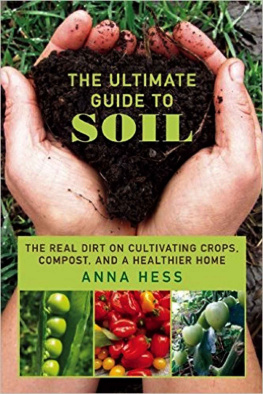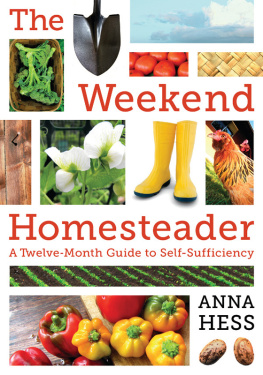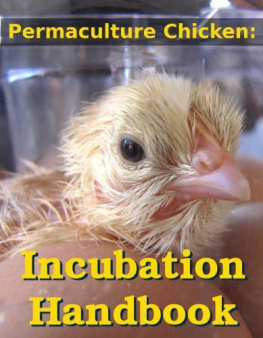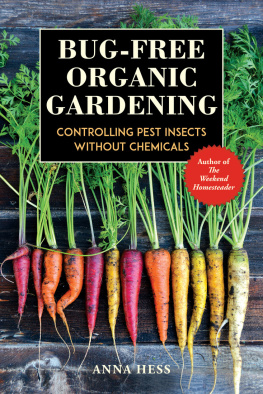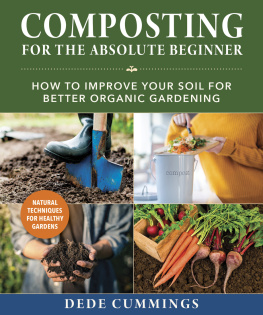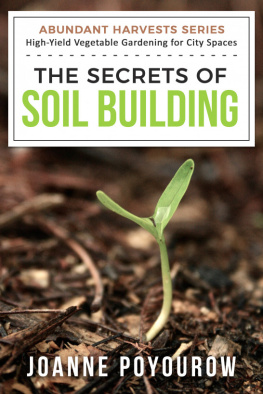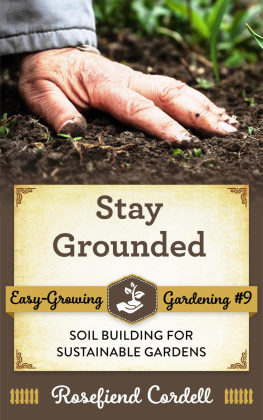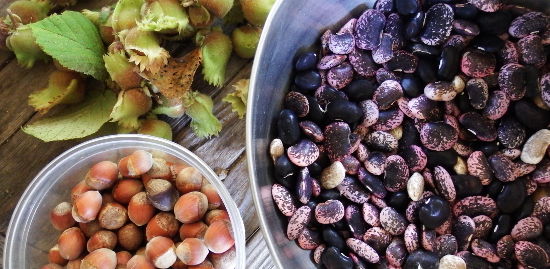TheUltimate Guide to Soil:
The Real Dirt on Cultivating Crops, Compost, and a Healthier Home
The Complete Four-Book Series Including:
Personality Tests for Your Soil
Small-Scale No-Till Gardening Basics
Balancing Soil Nutrients and Acidity
&
Soil Amendments for the Organic Garden
byAnnaHess
Copyright 2016 by Anna Hess
All rightsreserved.
No part of this book may be reproduced in any form or by anyelectronic or mechanical means including information storage andretrieval systems, without permission in writing from the author. Theonly exception is by a reviewer, who may quote short excerpts in areview.
Visit my blog at www.waldeneffect.org or read more about mybooks at www.wetknee.com.
Contents
Introduction
A love affair with soil
Soilis at the heart of a healthy garden.
When my husband wants tomake my day, he doesn't buy roses; instead, he comes home with atruckload of horse manure. On summer nights, he checks to see how muchdirt is embedded in the soles of my perennially bare feet beforeallowing me into bed. And he looks on slightly bemused when I rush outduring February thaws to weed the berry patch just for the sake ofplunging my hands into rich, dark garden soil.
Most gardeners know whereI'm coming from since they share my deep-seated attraction to dirt.Part of that fascination lies in the purely mechanistic understandingthat good soil makes healthy plants and eases the labors of weeding.But are any of us really immune to the seductive aroma of actinomyceteswafting out of a deep loam? When we read that scientists are runningcontrolled trials to determine how well another soil microorganism ( Mycobacterium vaccae ) works as anantidepressant by tricking our brains into producing extra serotonin,are we really surprised?
Joel Salatin likes to saythat he's a grass farmer. But for most of us, soil is the ultimateheart of our garden and homestead. Luckily, that heart is easy tonurture. A few easy changes to our usual gardening routines will createsoil so resilient and healthy that bountiful, nutrient-dense harvestsbecome a fact of life.
In my own garden, I've usedthe tips and tricks in this book to turn over-farmed, waterlogged,eroded ground into black gold that forms the focus of a vibranthomestead. And if you keep reading, your garden's journey back to goodhealth will be even faster and simpler than mine was. So why wait?Nurture your soil and reap the rewards of nourishing, homegrown fruitsand vegetables today!
The big picture
Eachyear, sorghum-sudangrass hybrids sequester three times as much carbonper acre as is packed away by a mature deciduous forest.
If feeding your garden'ssoil isn't a lofty enough goal for you, here's something toconsideragricultural soil is one of the easiest places to sequestercarbon in an effort to fight climate change. Every time your soil turnsone shade blacker, that's carbon dioxide you've pulled out of the airand put to work where it can't melt glaciers and raise sea levels.
So how do you maximize yourgarden's ability to pack on the carbon? Simply changing over to no-tillpractices sequesters 90 to 230 pounds of additional carbon per acre peryear, but cover crops are the real heavy hitters. A planting of oilseedradishes will pump a massive 3,200 pounds of carbon per acre per yearinto the ground...while still leaving you all summer to grow tomatoes!That's equivalent to the amount of carbon sequestered in a 120-year-oldnortheastern woodland of the same size. But why stop there?Sorghum-sudangrass hybrids triple oilseed radish's humus-buildingpowers, sequestering up to 10,565 pounds of carbon per acre into theearth and creating topsoil so rich that earthworms will go nuts.
The great thing about thecarbon sequestration powers of soil is that every trick you use tosequester carbon does double-duty by improving your garden's health andallowing you to grow more food with less work in a smaller space. Inthe end, if you get to work improving your soil's organic matterlevels, then that organic matter will get to work for you...and for theworld.
What to do if your soil isn't so friendly
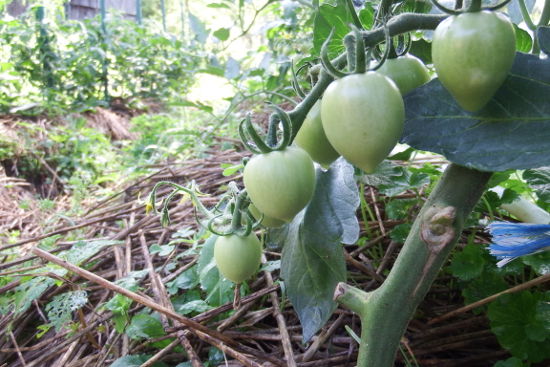
Six months after building high raised beds and amending with rottedchicken bedding, a formerly waterlogged wasteland was growing luscioustomatoes.
I can just hear some of yougriping, "Yes, dark, fluffy garden soil sounds wonderful! But my dirtis so terrible that when I plant cover crops, the buckwheat only getsthree inches high before giving up the ghost. How am I supposed tobuild soil if even cover crops refuse to grow?!"
Unfortunately, most of usaren't lucky enough to start out with high-quality soil. If you live inthe city or are trying to garden close to a new house site, you may befacing compacted subsoil masquerading as topsoil. Or perhaps you boughtan old farm like I did where the former owner's mismanagement causedall of the topsoil to completely erode away and where a high watertable turns your garden into a swamp. You may be fighting clay thatbecomes hard as a rock during summer droughts. Or maybe your soil is sosandy that every time you water, the ground is parched again half anhour later.
Don't despairall of thoseproblems can be fixed. Just so you know where I'm coming from, let meexplain that farmers judge soil based on land-capability classes, arating system that begins at 1 (excellent) and runs all the way to 8(terrible) based on potential agricultural uses of that land. Classes 1and 2 are perfect for row crops, 3 can sometimes be used for row cropsbut is better for hay, classes 4 through 6 are generally consideredonly good for pasture, and farming is not recommended on classes 7 and8. With that information in mind, you should know that my garden isdivided into two different capability classesmy "good" soil is class4, with the caveat that depth to the water table is often as little asone foot, while my poor soil is class 7 (not recommended for farming).
And yet, despite the deckbeing stacked against us, my husband and I have created vibrant,healthy garden ecosystems using both types of soil found on our land.In fact, we manage to feed ourselves all the vegetables we eat in ayear using that same un-garden-worthy soil.
The reason I tell you thisis to help overcome any pessimistic vision you might have of your ownplot of earth. No matter what your starting point looks like, you can improve your growing space andharvest as much food as you wish as long as you put the health of thesoil first.
So how do you take worn-outdirt and plant an edible paradise? The answer is simplefix anystructural problems (like compaction or a high water table), get thenutrients into balance, then build humus like mad. The rest of thisseries shows you how to do just that.
Personality Tests For Your Soil
Looking, smelling,and squeezing can give you critical insights into the health of yourgarden soil.
Most soil books feel obligedto begin with several long, grueling chapters about the chemistry andbiology of soil. And while my geeky side finds those topics intriguing,I have to admit that my eyes glaze over as I work my way throughformulas for bulk density and as I peruse long-winded descriptions ofthe nitrogen cycle.

